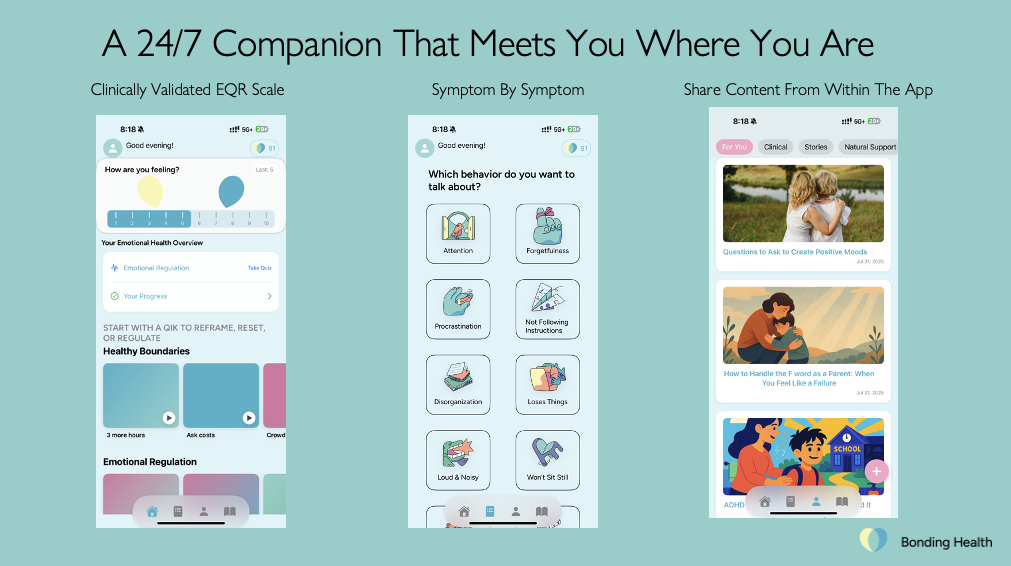Understanding Object Permanence in ADHD — And Why It Affects Relationships
If you live with ADHD, you might have had moments where a friend says, “You disappeared on me,” or you suddenly realize you haven’t replied to a text from weeks ago. It’s not that you don’t care. It’s that the moment something — or someone — is out of sight, they can slip out of mind.
This isn’t about being flaky or selfish. It’s called object permanence, and for ADHD brains, it works differently.
What Is Object Permanence?
In psychology, object permanence is the understanding that something still exists even when you can’t see it. Babies develop it around 8 months old — before that, if a toy is hidden under a blanket, they think it’s gone forever.
For most adults, this concept becomes second nature. You don’t have to see your passport to know it’s in the drawer. You remember a friend even if you haven’t talked to them in a while.
For many people with ADHD, though, the mental “holding space” for these unseen things is weaker. Once something leaves your visual or mental field, it’s easy for it to fade from active awareness — whether it’s an object, a task, or even a relationship.
Why ADHD Impacts Object Permanence
ADHD affects working memory, the brain’s ability to hold and manipulate information over short periods. Working memory is like the brain’s sticky note — and in ADHD, that sticky note doesn’t always stick.
When working memory is limited, here’s what can happen:
Out of sight = out of mind for tasks (forgetting to pay bills or return a borrowed book)
Losing track of hobbies or projects you enjoy because they’re not right in front of you
Going long stretches without contacting someone you care about, not from disinterest but because they’re not in your immediate environment.
Emotional Object Permanence
There’s a second layer to this — emotional object permanence. This is the ability to hold onto the feeling of being loved, valued, or connected when you’re not actively with someone.
With ADHD, emotional object permanence can be shaky. You might:
Feel disconnected from a friend or partner if you haven’t spoken recently
Need more reassurance than others that a relationship is still strong
Struggle to feel motivated to reach out if the emotional “signal” fades
It’s not that the relationship matters less — it’s that your brain doesn’t automatically refresh that sense of connection in the background.
Real-Life Examples
You love your guitar, but it’s stored in the closet. Months pass without playing because it’s not visible.
You’re devoted to a friend, but weeks fly by without texting because you’re caught up in what’s in front of you.
You intend to follow up on a work email, but once it scrolls off your screen, it’s gone from your mental radar.
Strategies to Work With It
The goal isn’t to “fix” object permanence — it’s to design around it.
1. Make Things Visible
Keep important items in sight — a basket for keys by the door, a guitar stand in the living room, a whiteboard for bills and tasks.
2. Externalize Memory
Use digital reminders, sticky notes, or calendar alerts for both tasks and relationships (“Text Sam,” “Check on project file”).
3. Pair Actions With Cues
Tie actions to existing habits — reply to texts while you drink your morning coffee, call a parent on your walk home.
4. Build Relationship Rituals
Create standing check-ins with friends or partners so contact doesn’t depend on memory alone.
Sometimes, overwhelm or shame makes it harder to re-engage once you realize you’ve gone quiet. Short emotional resets — like guided breathwork, journaling prompts, or quick grounding exercises — can help you step back in without spiraling.
Self-Compassion Is Key
If you struggle with object permanence, it’s not because you’re careless or cold. ADHD changes the way your brain holds onto information and connection. The important thing is finding systems that keep what matters in view — literally and emotionally.
Relationships, tasks, and passions don’t have to vanish when they’re not in front of you. With the right supports, you can keep them alive in your awareness — and in your life.
A valuable addition to this journal is our Burnout journal, and why it is crucial to take preventive measures against it.


